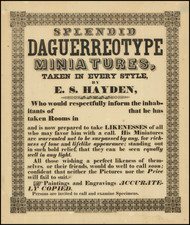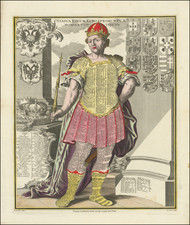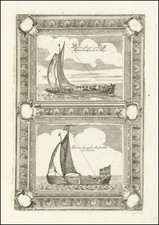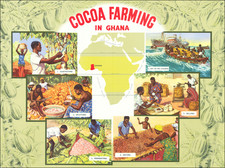Fine old color example Peter Schenk's rare plate illustrating 191 naval flags of all parts of the world.
Schenk notes that he has added over 50 never before illustrated naval flags, including an appearance of the so-called "New England Globe Flag." The New England Globe Flag is one of the earliest examples of an indigenous New England Flag. As noted at page 97 of Volume XXIII of the Rhode Island Historical Society Collections (January 1930):
The first dated reference to the globe flag seems to be in the "Schouw-Park aller Scheeps-Vlaggen" or "Tableau des Pavilions de Mer," which was published by Pieter Schenck at Amsterdam in 1711.'' The New England flag is shown hand colored and with the colors also shown by tincture lines, as a blue flag, having a white canton with a red cross and with a globe on a standard in the first quarter of the canton. The globe is outlined in black, but no color is specified. No reference to this globe flag has been found in any contemporary English or American writings . . .
It would appear that this image is one of the earliest surviving images of an American Flag. The earliest official flag for American Merchant Ships was a Union Jack with a white escutcheon in the center, as ordered by the British Admiralty. No illustration of such flag survives. The next earliest flag consisted of a red flag with the cross of St. George in the top left corner and a tree in the upper left corner of the cross of St. George. The earliest illustration of this flag dates to about 1686, although the surviving printed examples appear in 1704 and 1705.
The present flag, a blue flag with a globe replacing the tree, seems to have first appeared on this Table of Flags published by Peter Schenk and is quite possibly the earliest surviving illustration of this style of Flag of New England.
The following link outlines the various early flag configurations: http://www.vexman.net/flags/NEFlag.html
Among the flags are the following unusual flags
- New England
- Spanish Galicia
- Barcelona
- Gallicien
- Biscaya
- Majorca
- Jerusalem
- Ragusa (2)
- Riga (2)
- Revel
- Dantzig
- Elbing
- Constantinopolen
- Mamelik
- Sangrian
- Tetuan
- Slavonien
- Roovers
- Batavia
- Bantam
- Persian Mogol
- Sina (China)
- Seneese Ionke v. Nanking
- Keizer v. Iapara (Japanese Emperor)
- Tartarse Keizer
- Tartarien
Peter Schenk the Elder (1660-1711) moved to Amsterdam in 1675 and began to learn the art of mezzotint. In 1694 he bought some of the copperplate stock of the mapmaker Johannes Janssonius, which allowed him to specialize in the engraving and printing of maps and prints. He split his time between his Amsterdam shop and Leipzig and also sold a considerable volume of materials to London.
Peter Schenk the Elder had three sons. Peter the Younger carried on his father’s business in Leipzig while the other two, Leonard and Jan, worked in Amsterdam. Leonard engraved several maps and also carried on his father’s relationship with engraving plates for the Amsterdam edition of the Histoire de l'Académie Royale des Sciences.












![(Photographs of Western Logging) [Three cabinet card albumen photographs of loggers at work, felled trees]](https://storage.googleapis.com/raremaps/img/small/87452.jpg)

![Boussole des vents ou leurs noms tant Anciens que Modernes sont Diuisez en six Cercles suivant les principales Nations de l'Europe [Compass Rose & Wind Heads]](https://storage.googleapis.com/raremaps/img/small/84965.jpg)